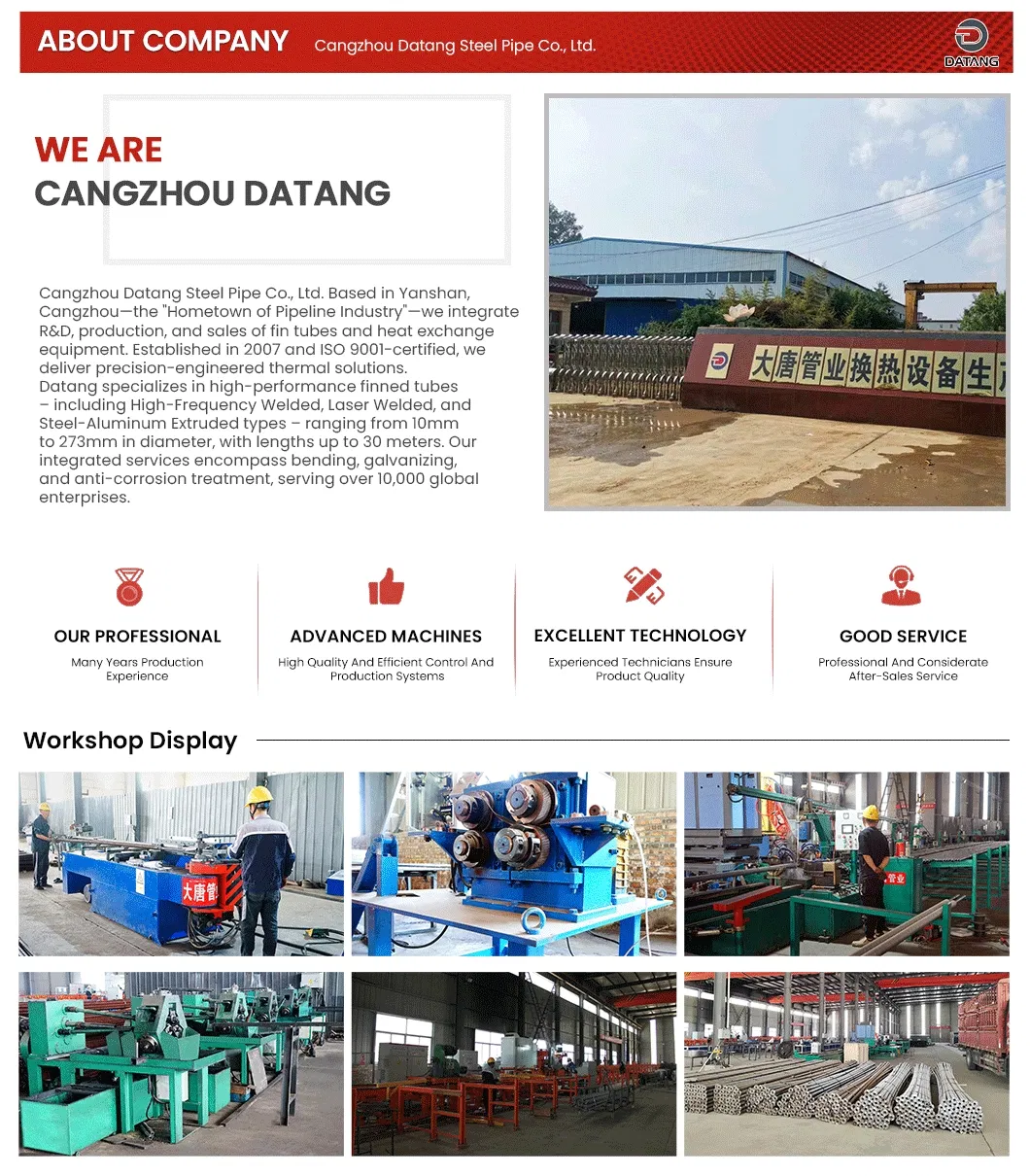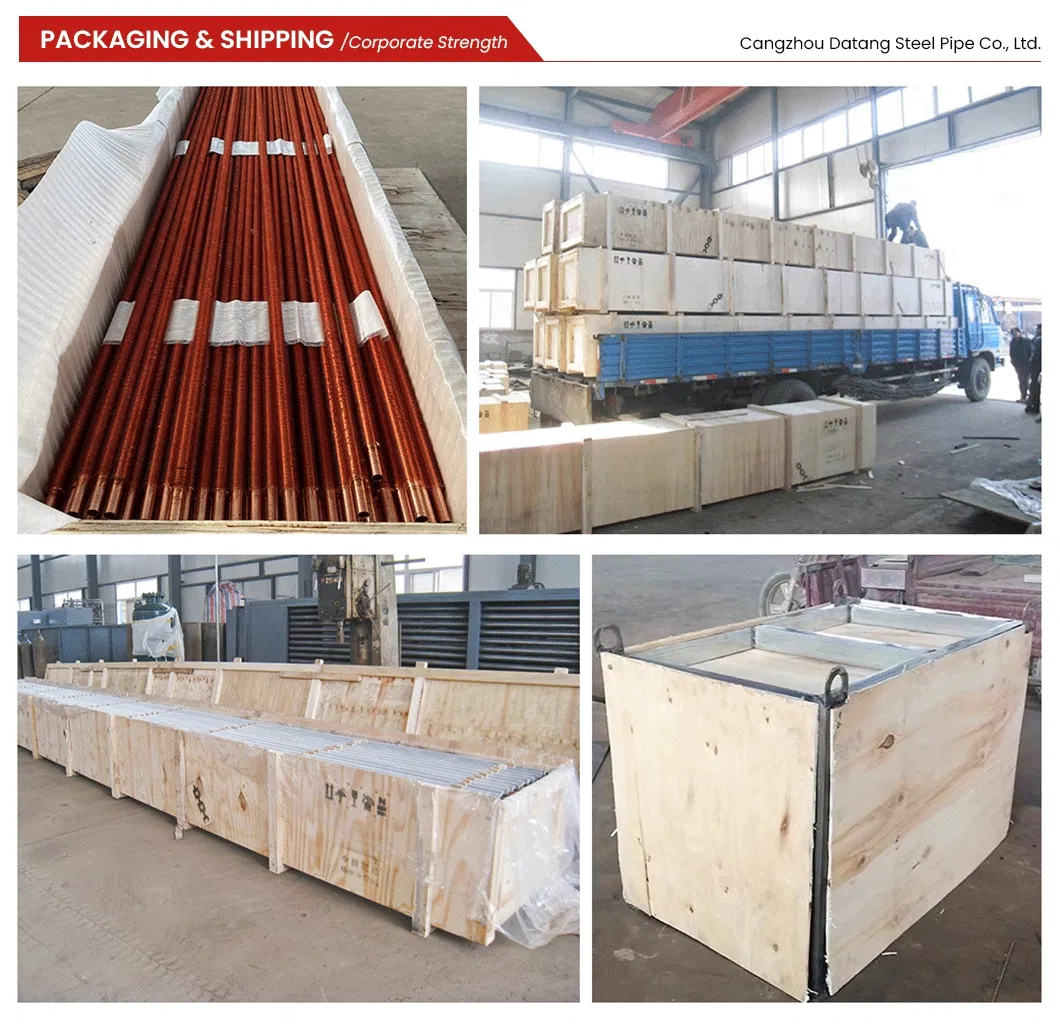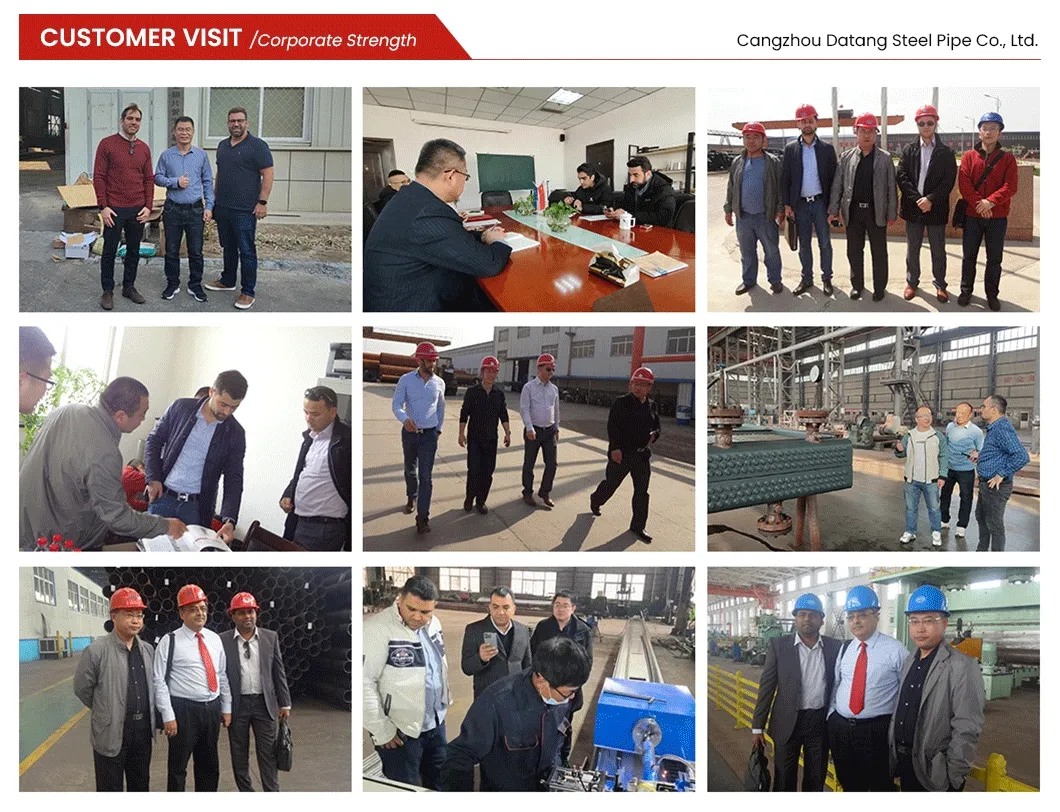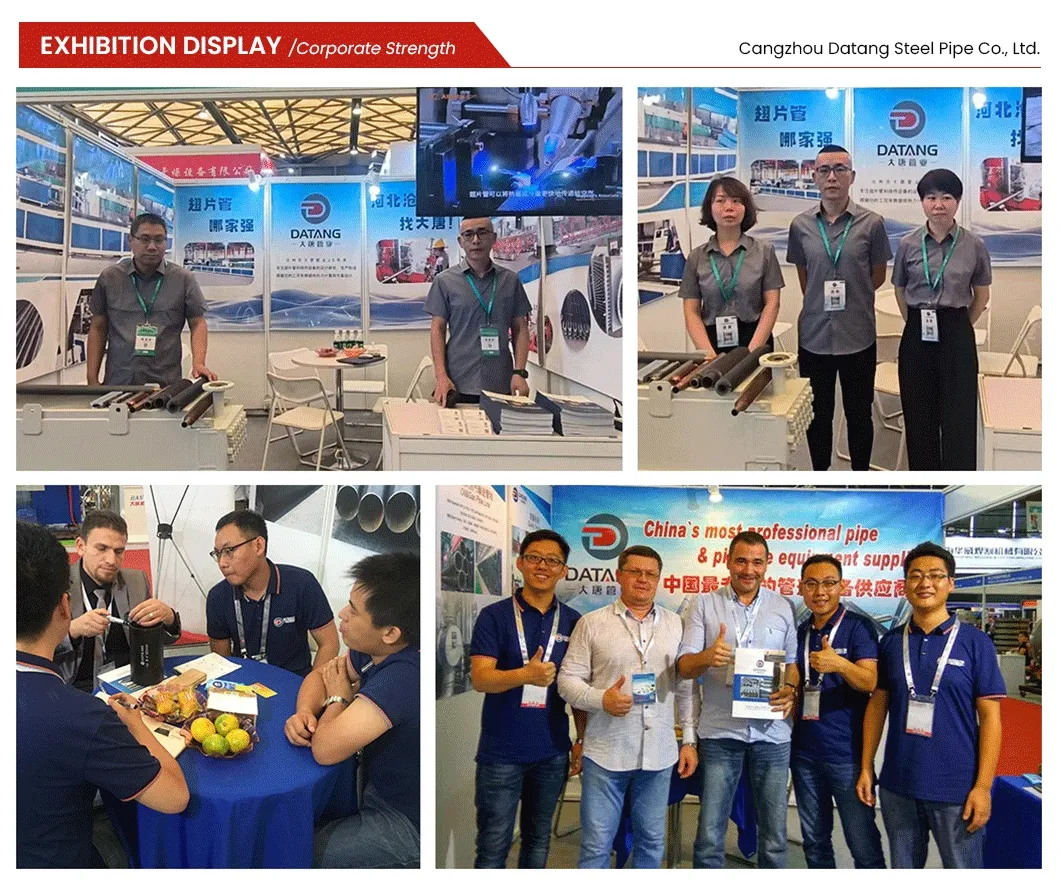The factors affecting أنبوب زعانف heat dissipation mainly include the material of the base tube and fin, the fin structure, the external environment, and the maintenance and cleaning conditions.
Fin material and base tube material:
The thermal conductivity of the fin material plays a decisive role in the heat dissipation efficiency. Aluminum fins have a high thermal conductivity coefficient and can quickly transfer heat to the air, while steel fins have high strength but relatively poor thermal conductivity. The choice of base tube material also affects the heat dissipation efficiency. High-quality base tube material can ensure smooth flow of heat medium in the tube and reduce energy loss during heat transfer.
Fin structure design and parameters:
The height, thickness, spacing and shape of the fins will affect the heat dissipation effect. Higher fins can increase the heat dissipation area, but will also increase the air flow resistance; reasonable fin spacing can ensure smooth air circulation and improve heat dissipation efficiency.
The quality of the connection between the fin and the base tube also affects the heat transfer effect. Loose connection will lead to reduced heat transfer efficiency.
External environmental factors:
External environmental conditions such as temperature, humidity and air flow rate have a significant impact on the heat dissipation effect. High temperature and high humidity environment will increase the heat load of the radiator, while faster air flow speed will help take away more heat and improve heat dissipation efficiency.
External environment such as humidity, high salt fog and highly corrosive gas environment will accelerate the aging of the radiator and affect its performance.
Maintenance and cleaning conditions:
Regular maintenance and cleaning are essential to keep the finned tube radiator in optimal working condition. The accumulation of dust and dirt will form thermal resistance, hinder the effective transfer of heat and reduce the heat dissipation efficiency.
Heat medium temperature and flow rate: The temperature and flow rate of the heat medium directly affect the temperature distribution and heat dissipation capacity of the radiator. Higher heat medium temperature and appropriate flow rate can enhance the heat dissipation effect.




 dtfinnedtube.com
dtfinnedtube.com

